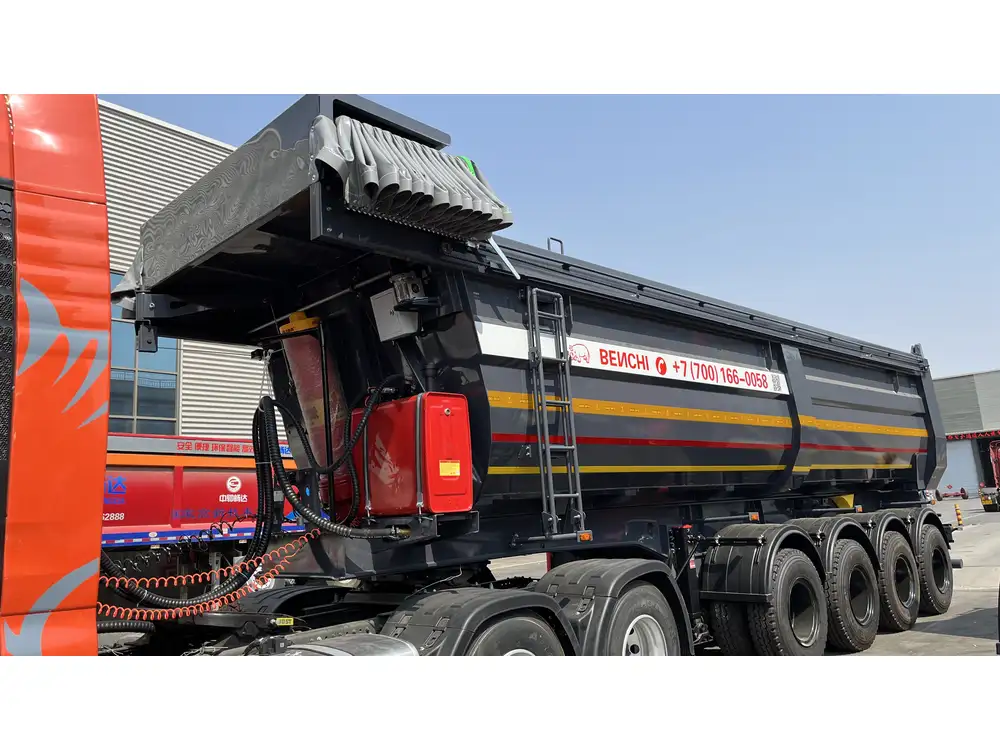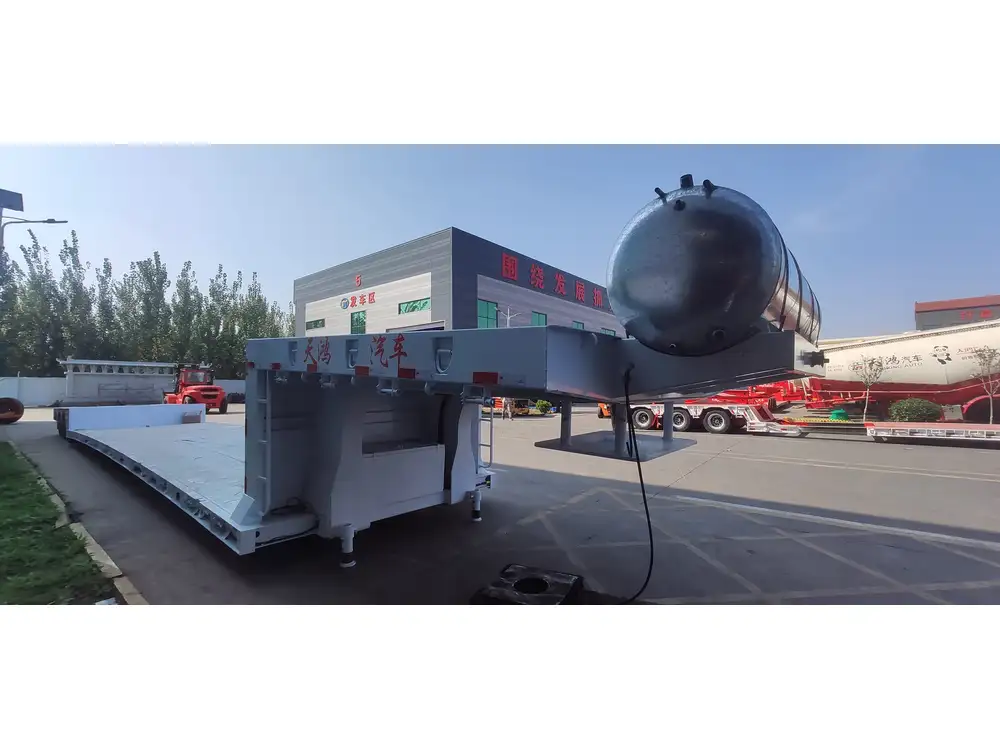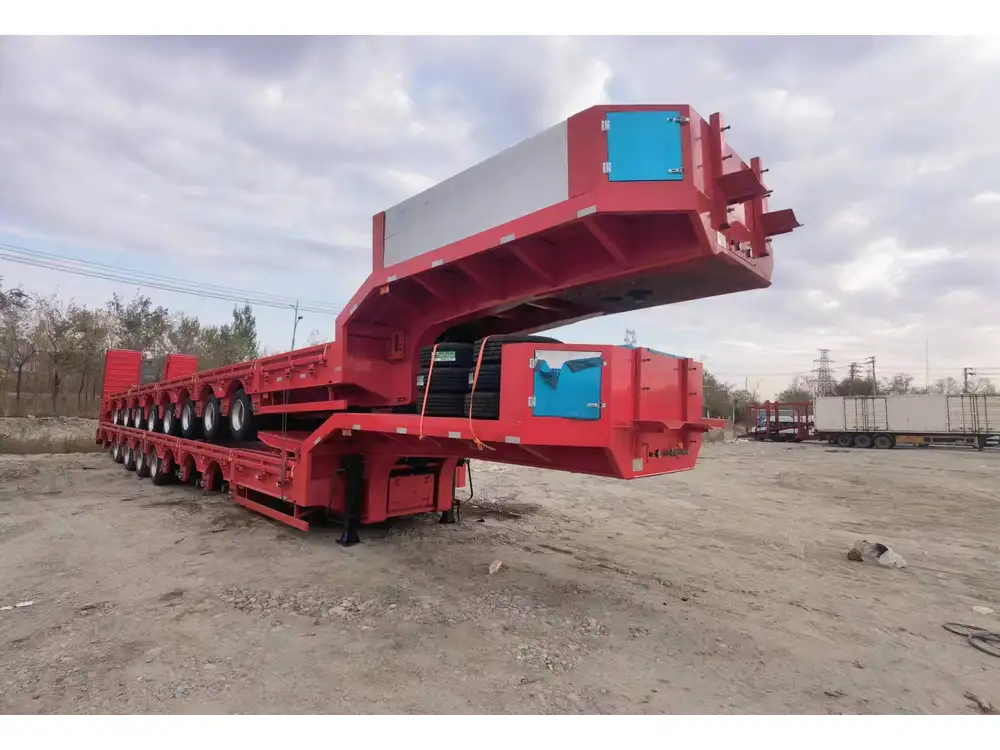When delving into the myriad details surrounding semi-trailers, one crucial aspect often surfaces: the length of these vehicles. The dimensions of a semi-trailer can significantly impact its usability, efficiency, and compliance with regulatory standards. In this comprehensive guide, we explore various factors influencing semi-trailer lengths, the distinctions between different types, and recommendations for selecting the optimal length for your needs.
Table of Contents
- The Importance of Semi-Trailer Length
- Standard Semi-Trailer Lengths
- 2.1 48-foot Semi-Trailers
- 2.2 53-foot Semi-Trailers
- 2.3 Other Variants
- Regulatory Guidelines
- Length vs. Cargo Capacity
- Choosing the Right Length for Your Needs
- Conclusion
The Importance of Semi-Trailer Length
Choosing the right length for a semi-trailer is pivotal for multiple reasons. Firstly, it directly affects the trailer’s maneuverability, load capacity, and fuel efficiency. Longer trailers can carry more cargo but may struggle with tight turns, while shorter ones offer improved agility, especially in urban environments.
Moreover, semi-trailer length often intersects with legal restrictions. Different regions impose unique regulations regarding the maximum permissible lengths, especially on interstate highways. Understanding these regulations allows fleet operators to optimize logistics without facing fines or delays.

Standard Semi-Trailer Lengths
The industry has recognized several standard lengths for semi-trailers, which primarily cater to the diverse needs of transportation. Below, we dissect the most popular lengths:
48-Foot Semi-Trailers
The 48-foot semi-trailer is one of the most ubiquitous designs in North America. Known for its balanced capacity and maneuverability, it often serves as a reliable choice for general freight transport.
Advantages:
- Versatile for various loads.
- Often easier to maneuver in cities.
- Typically fits inside standard loading docks.
Common Uses:
- Boxed goods.
- Palletized freight.
- Furniture and appliances.
53-Foot Semi-Trailers
Rounding out the most common lengths is the 53-foot semi-trailer. Offering additional cargo capacity, this design is favored for long-haul transportation.
Advantages:
- Increased cargo space allows for transporting larger quantities.
- Higher revenue potential due to more loads per trip.
Common Uses:
- Retail shipments.
- Industrial machinery.
- Food products.

Other Variants
In addition to the standard lengths, various specialized semi-trailers exist. Some of these include:
| Length | Type | Common Uses |
|---|---|---|
| 40-foot | Flatbeds | Construction materials, agricultural products |
| 45-foot | Refrigerated trailers | Perishable goods and temperature-sensitive items |
| 28-foot | Doubles (Twin Trailers) | Short runs, local deliveries |
Regulatory Guidelines
Understanding the legal framework surrounding semi-trailer lengths is essential for compliance and operational success. In the United States, the Federal Highway Administration (FHWA) specifies that the maximum allowable length for a semi-trailer is as follows:
- Single Trailers: 48 feet, with 53 feet allowed in many states.
- Double Trailers: Generally limited to a combined length of 65 feet.
However, regulations can vary by state; thus, familiarity with regional rules is imperative. For instance, some states might allow longer trailers if they can demonstrate a positive impact on pay-per-mile fuel taxes.
Length vs. Cargo Capacity
When determining a semi-trailer’s effectiveness, length isn’t the sole factor; cargo capacity is intricately tied to the trailer’s design. For instance, a standard 48-foot dry van semi-trailer may have a maximum payload of 26,000 to 28,000 pounds, depending on the weight of the trailer itself. Below is a comparative summary that illustrates how length correlates with cargo capacity:
| Trailer Type | Length | Max Payload Capacity |
|---|---|---|
| Standard Van | 48 feet | 26,000 – 28,000 lbs |
| Standard Van | 53 feet | 29,000 – 32,000 lbs |
| Flatbed | 48 feet | 40,000 – 48,000 lbs |
| Reefer Trailer | 53 feet | 34,000 – 39,000 lbs |
While longer trailers typically boast more extensive cargo capacities, they also have increased weight, which can influence fuel efficiency and operating costs.

Choosing the Right Length for Your Needs
Selecting the appropriate length of a semi-trailer hinges on several factors, aligning them with business needs and logistical considerations. Here are some critical points to assess:
1. Load Type
- Frequent Smaller Loads: If your operations often involve transporting smaller shipments, a 48-foot trailer may be ideal for effortless navigation and efficient loading/unloading.
- Bulk Transport: A 53-foot model might be preferable for transporting larger items or when maximizing load size is a priority.
2. Route Considerations
- Urban Areas: Shorter trailers’ enhanced maneuverability shines in scenarios with numerous turns and limited space.
- Long-Haul Routes: Opting for longer trailers can increase profitability when transporting cargo over vast distances.

3. Regulatory Framework
- Always verify state-specific and federal regulations before purchasing additional equipment. This would reduce the risk of incurring fines or delays due to non-compliance with length restrictions.
4. Freight Efficiency
- Balancing payload and trailer weight is essential for maximizing freight efficiency. While more extended trailers can carry more cargo, they may exceed weight limits when loaded.
Conclusion
Understanding the intricacies of semi-trailer lengths is not merely a matter of knowing the numbers. Rather, it involves integrating that knowledge into practical applications—maximizing efficiency, ensuring compliance, and optimizing cargo capabilities. Whether your business leans towards short hauls or long-distance transport, carefully considering trailer length will yield significant dividends, not just in operational efficiency, but also in enhancing profitability over time. Equip your fleet with the right tools; it’s a decision that reverberates throughout logistics, influencing every facet of your transport operations.



